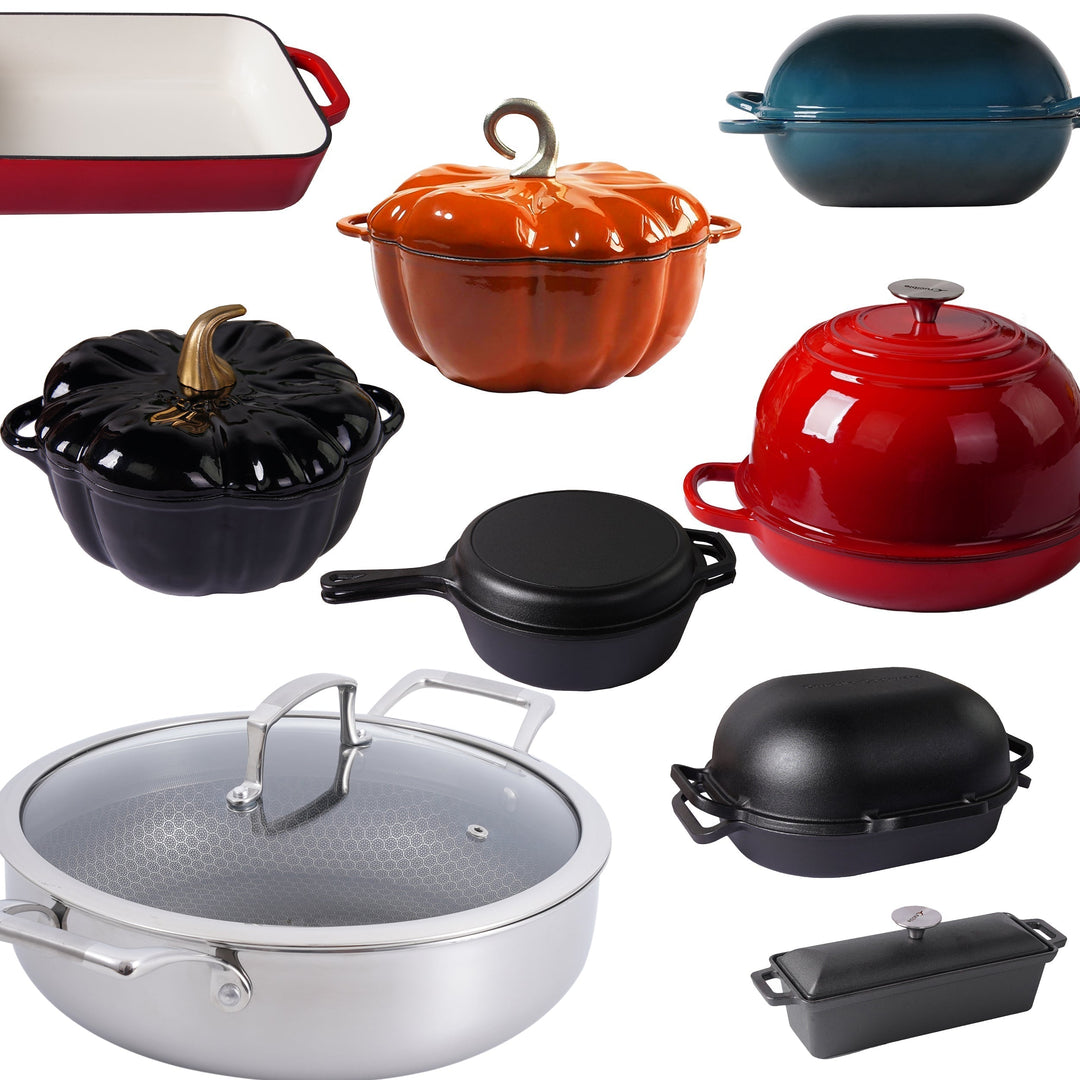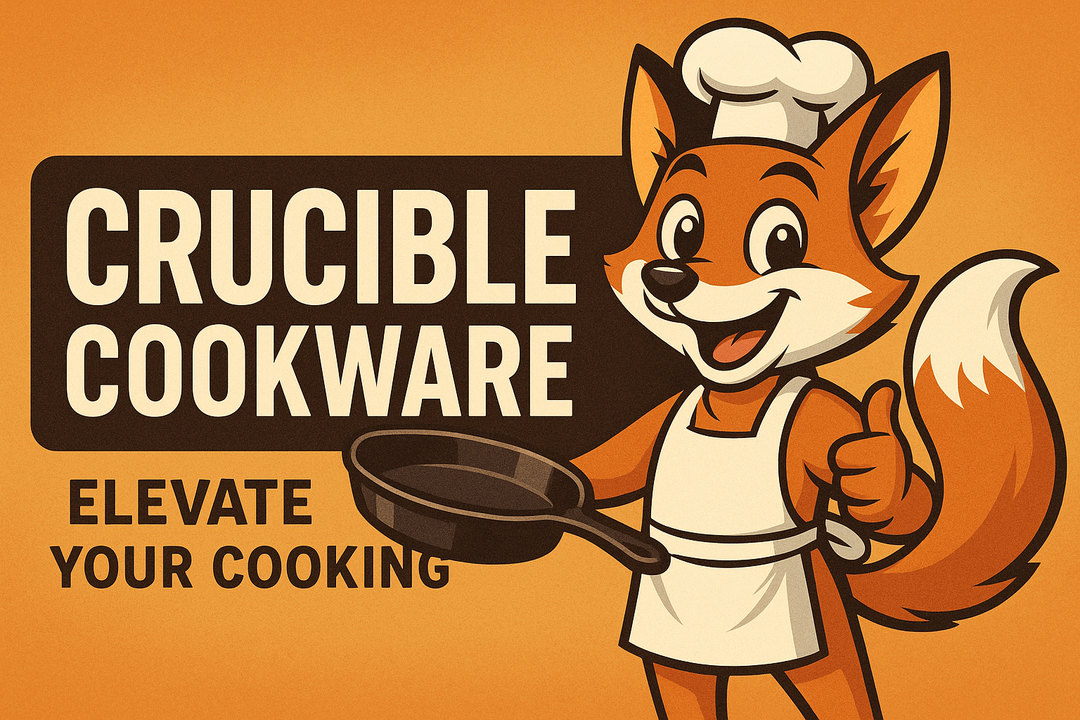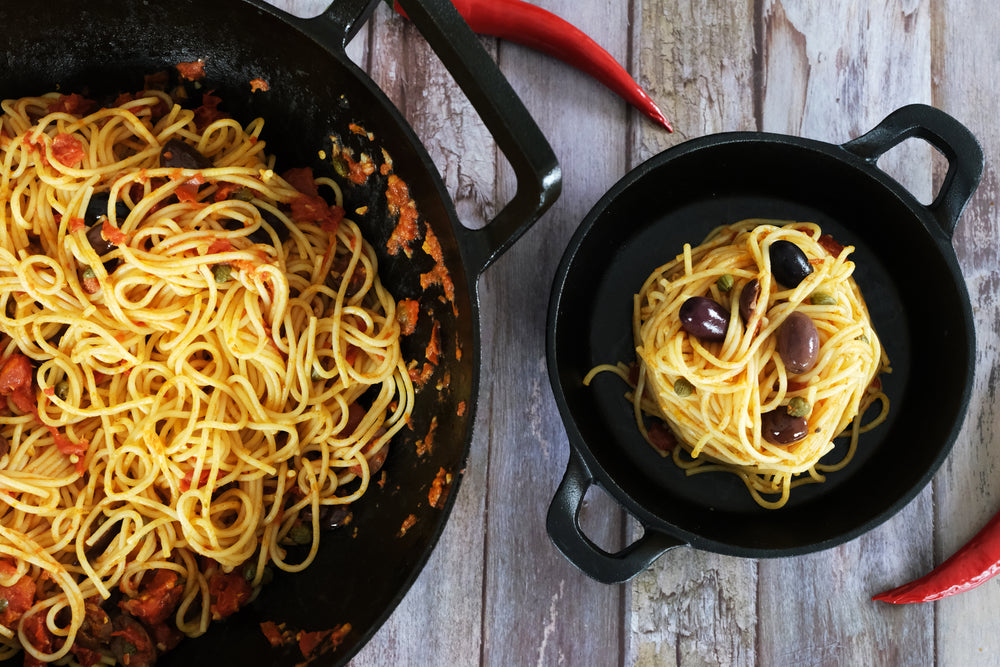Наука о прокаливании чугунной посуды: советы и методы

Когда речь идёт о посуде, немногие изделия так любимы и универсальны, как чугун. Ключ к раскрытию полного потенциала вашей чугуной посуды — правильное прокаливание. Независимо от того, являетесь ли вы опытным шеф-поваром или домашним кулинаром, понимание науки прокаливания и освоение техники могут преобразить ваш кулинарный опыт. В этом посте мы рассмотрим основы прокаливания чугуна, изучим лучшие масла для использования и предоставим пошаговое руководство, чтобы ваша чугунная посуда оставалась в отличном состоянии.
Что такое Прокаливание?
Прокаливание — это процесс создания защитного слоя на вашей чугунной посуде посредством нанесения и полимеризации масла. Этот слой не только предотвращает ржавчину, но и придаёт посуде антипригарные свойства, что делает её идеальной для различных кулинарных задач. Когда вы нагреваете масло в чугунной сковороде, оно претерпевает химическую трансформацию, связываясь с поверхностью и образуя прочное, гладкое покрытие. Это необходимо для поддержания долговечности и производительности вашей чугуной посуды.
Выбор правильного масла для Прокаливания
Тип масла, которое вы используете для прокаливания, имеет решающее значение, так как разные масла имеют разную температуру дымления. Температура дымления — это температура, при которой масло начинает разлагаться и дымиться, что является важным фактором в процессе прокаливания. Вот некоторые из лучших вариантов масла для прокаливания:
- Льняное масло: Известное своей высокой температурой дымления и свойствами полимеризации, льняное масло является фаворитом среди многих энтузиастов чугунной посуды.
- Растительное масло: Легко доступное и недорогое, растительное масло является надежным выбором для прокаливания.
- Рапсовое масло: Еще одно распространенное домашнее масло, рапсовое масло имеет подходящую температуру дымления для прокаливания чугуна.
- Виноградное масло: Благодаря высокой температуре дымления виноградное масло отлично подходит для создания прочного слоя прокаливания.
Пошаговое руководство по прокаливанию чугунной посуды
-
Тщательно очистите сковороду: Начните с мытья чугунной сковороды горячей мыльной водой, чтобы удалить заводские покрытия или ржавчину. Полностью высушите полотенцем.
-
Нанесите масло: С помощью ткани или бумажного полотенца нанесите тонкий, равномерный слой выбранного масла на всю поверхность сковороды, включая ручку и внешнюю сторону.
-
Нагрейте сковороду: Поместите смазанную маслом сковороду вверх дном в предварительно разогретую духовку при 450-500°F (232-260°C). На нижнюю решетку положите лист алюминиевой фольги, чтобы поймать капли.
-
Запекание и повторение: Запекайте сковороду в течение часа, затем выключите духовку и дайте сковороде остыть внутри. Для наилучших результатов повторите этот процесс 2-3 раза, чтобы создать прочный слой прокаливания.
Поддержание прокаливания
Чтобы ваша чугунная посуда оставалась в отличном состоянии, следуйте этим советам по уходу:
- Чистка: Избегайте использования мыла. Вместо этого мойте сковороду горячей водой и жесткой щеткой или пластиковым скребком. Для пригоревшей пищи используйте крупную соль в качестве абразива.
- Сушка: Немедленно тщательно высушите сковороду, чтобы предотвратить ржавчину.
- Повторное нанесение масла: После каждого использования наносите тонкий слой масла для поддержания прокаливания. Кратковременно нагрейте сковороду, чтобы масло лучше сцепилось.
Распространённые ошибки и как их избежать
- Использование слишком большого количества масла: Избыток масла может привести к липкой поверхности. Всегда наносите тонкий, равномерный слой.
- Недостаточный нагрев: Убедитесь, что сковорода достаточно нагрета, чтобы масло правильно полимеризовалось.
- Пропуск обслуживания: Регулярное обслуживание — ключ к успеху. Его игнорирование может привести к ржавчине и потере антипригарных свойств.
Заключение
Хорошо прокаленная чугунная сковорода — это незаменимый помощник на кухне, обеспечивающий непревзойденное качество приготовления и долговечность. Понимая науку прокаливания и следуя правильным методам, вы можете гарантировать, что ваша чугунная посуда останется в отличном состоянии на долгие годы.
Больше ресурсов:















Оставить комментарий